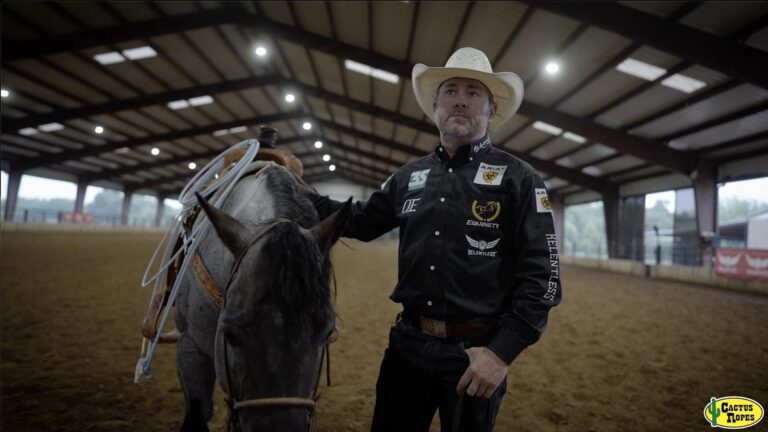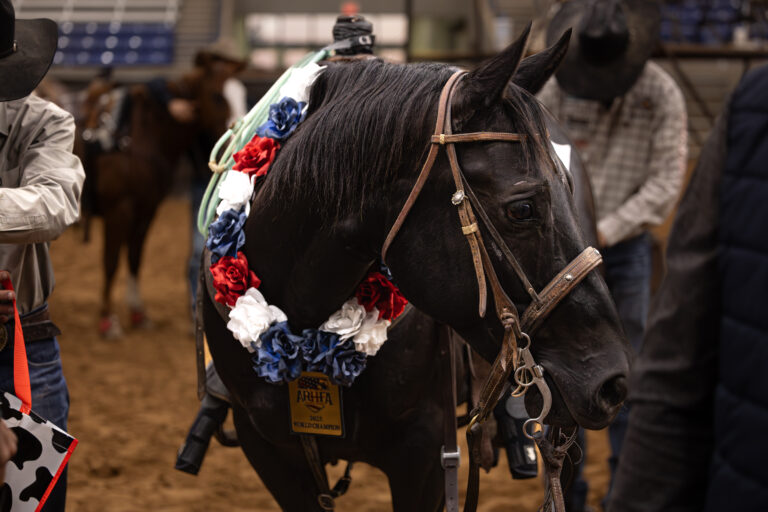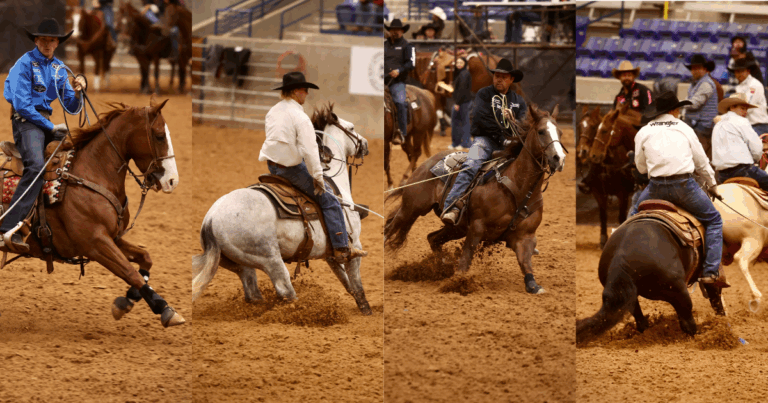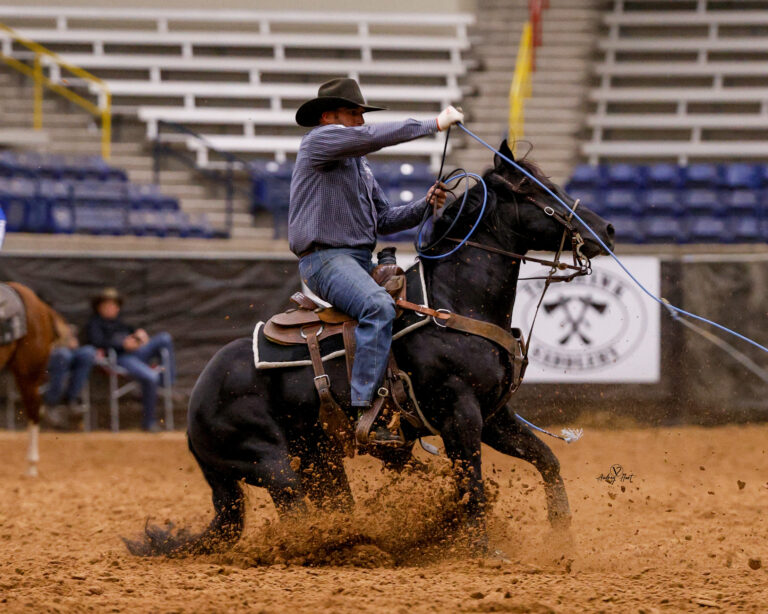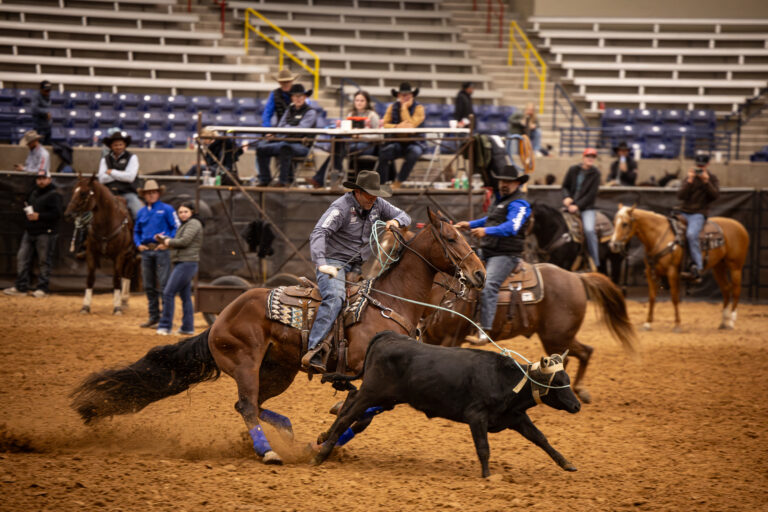When I was little, I spent time in front of the mirror looking at my swing, studying the angle of my rope. Back in the day, I’d stand at the saw horse for hours, figuring out the best way to get my tip to drive the whole way through with a big, open loop. Today, those skills are still as applicable as ever. The quality of your loop, from the time you leave the box the whole way through to your delivery, will make or break your heeling at any level.
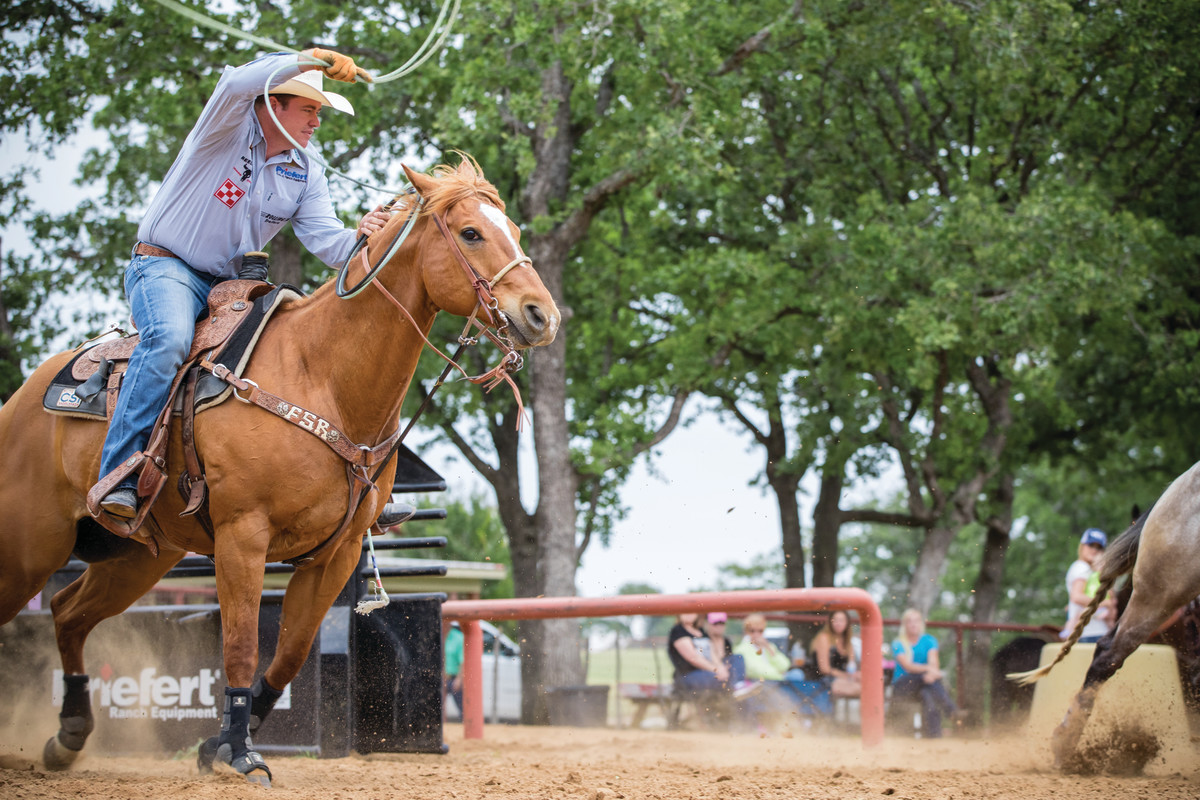
Whether I’m at a jackpot trying to catch or at a rodeo trying to be fast, it’s important that I get my swing up with my tip pointed toward the steer from the start. The best guys in the world have their swing in front of their face, drawing a circle with their tip. Everything is smooth. If I get my rope too far behind my head, my angle will be off and it will take my rope too long to get to the steer’s feet. It’s angled to the left, but just a little bit.
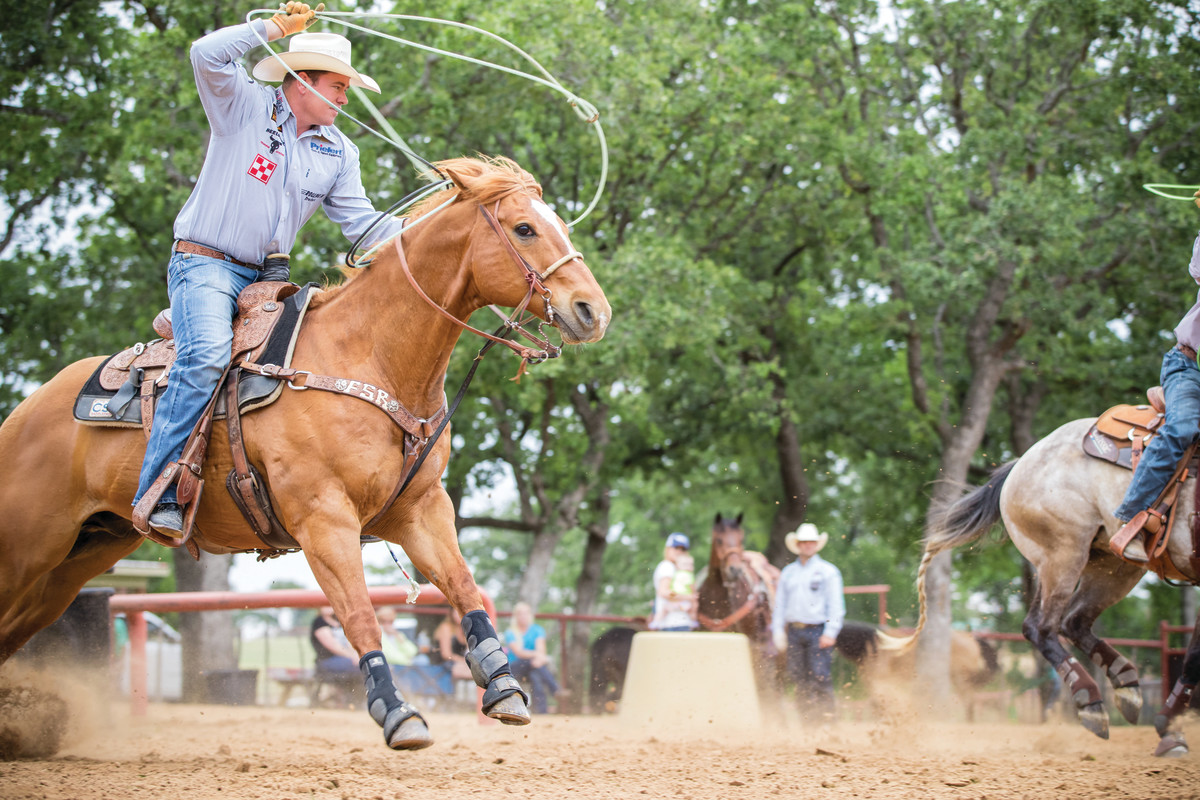
As soon as I get my rope up, I’m feeding on my second or third swing. If it’s a rodeo like Cheyenne or Salinas, I don’t have to have it fed out as fast. At the NFR, I feed it out on my first swing. My rope has to be balanced—I can’t have too much in between my hands. When I throw, my loop will fall over and won’t stand if I have too much in between my hands, or I’ll just catch the right leg because I won’t have enough loop. If I’m handcuffed with not enough in between my hands when I throw it, it doesn’t allow the bottom to get to the ground. What’s crazy is heeling is totally opposite of heading because headers like a lot in between their hands. If you ever talk to headers that heel, they usually run into that problem of having too much in between their hands. That’s hard for them to get used to.
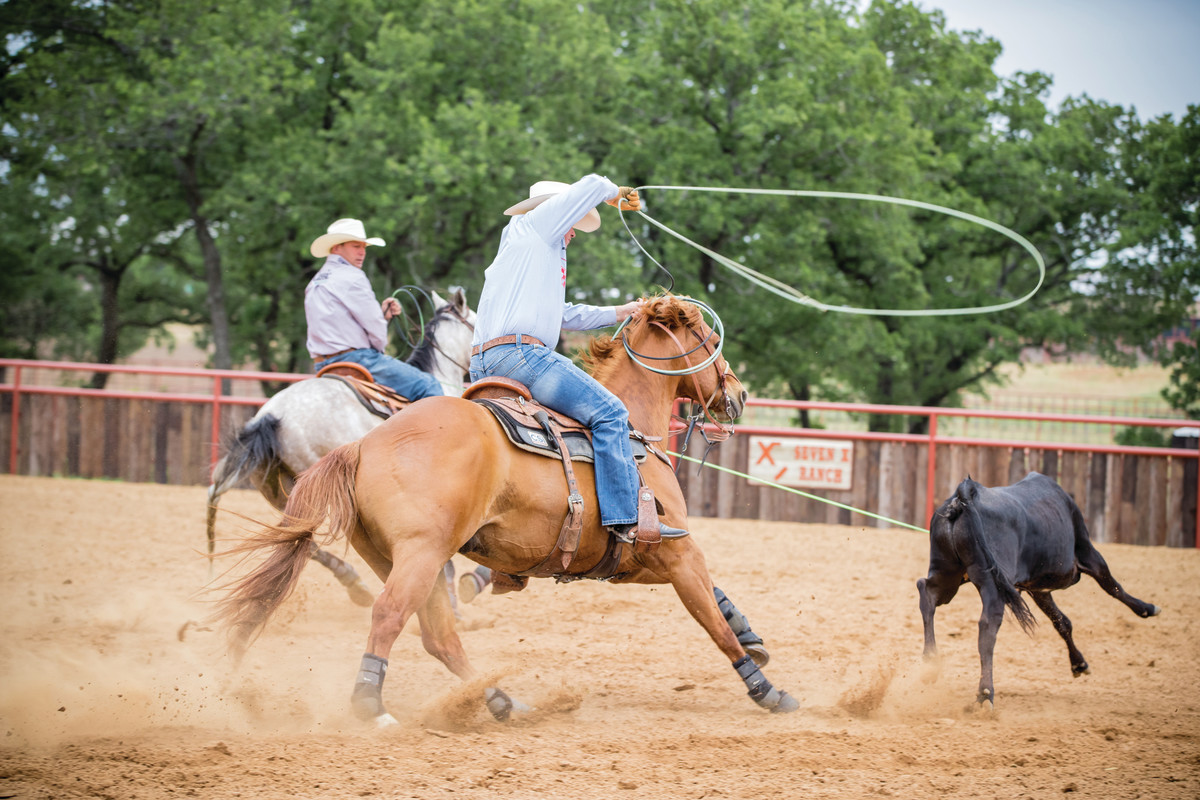
My rope levels off when I turn. I need to have enough speed on my swing to get with the cow when I leave the box, but when I turn, my angle changes because the plane of my rope changes. Level is better than too much left. It’s still pointed at the cow, but it’s leveling out. My tip is still pointed at the same spot but, obviously, I can’t have it at the same angle because I want it to level off over his back.
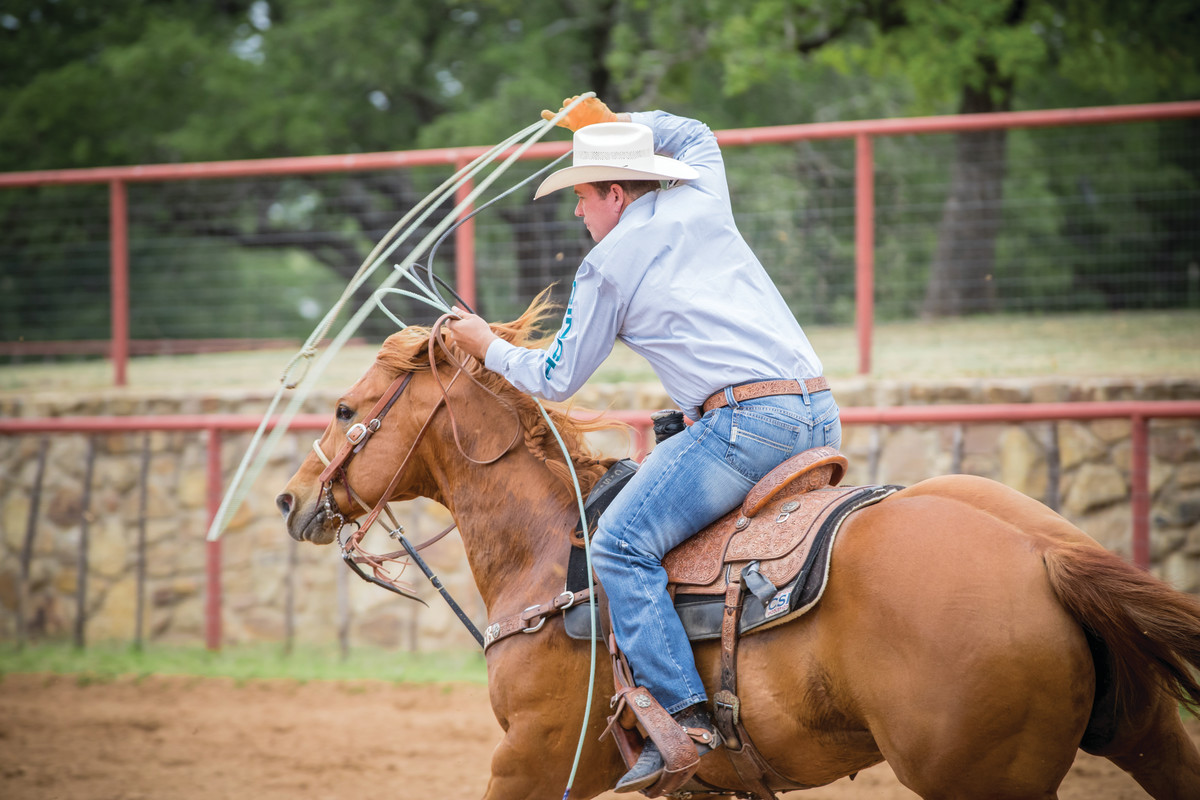
I want my horse almost looking through the loop. Keeping my loop at this level plane over the steer’s back covers the whole area, so when I deliver, all I need to do is hold onto it long enough to bring my loop all the way through. If my tip is high or if it’s angled to the right, the loop won’t follow through and I’ll rope a right leg, or my tip will hit the ground, or I’ll catch a front foot.
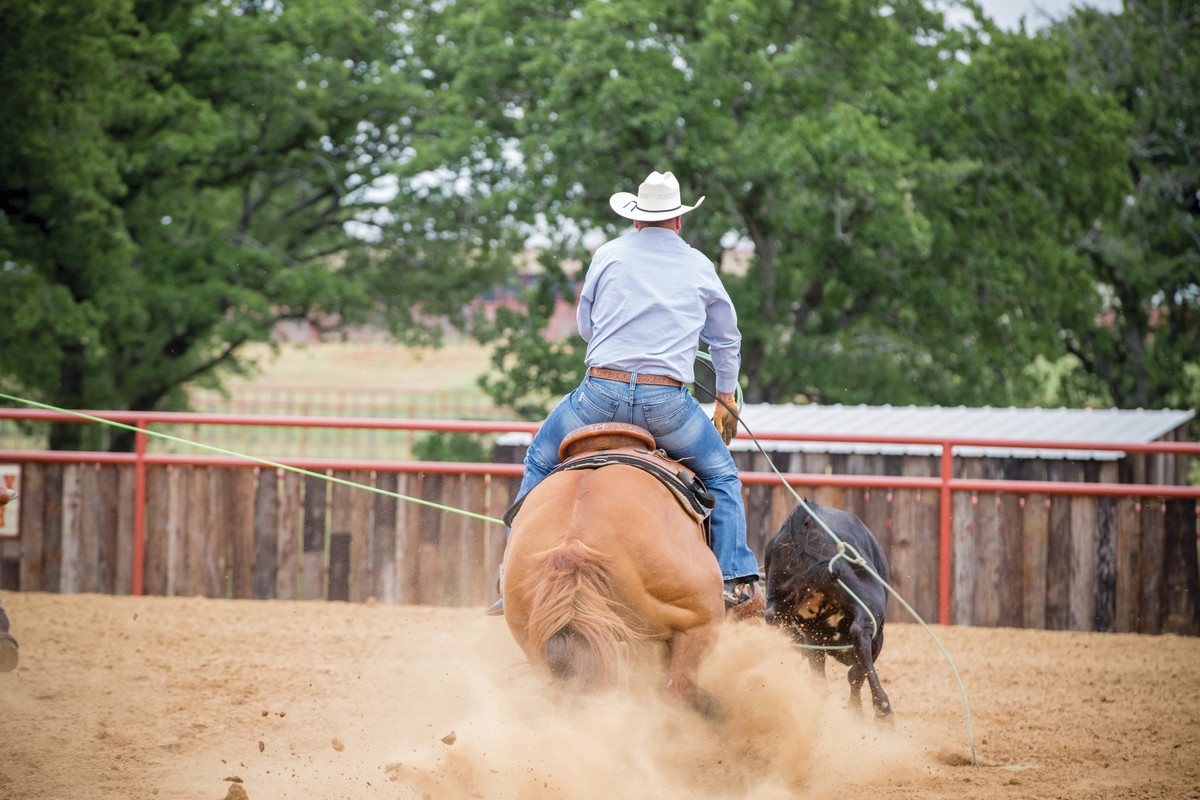
When I teach schools and clinics, one of the biggest problems I see is guys letting go too soon. So many ropers don’t realize how long you should hold on to it to get your loop to the feet. If I let go too soon, I’m not guiding it in the right direction. My tip is still going forward or right. I have to hold onto it to get it going the right direction, with my elbow coming to the inside, waiting for my tip to catch up to my hand. When the tip is almost to the right leg, then I can let go. Knowing where your tip is, based on your body position being forward and the angle of your rope, is critical in catching two feet. n




